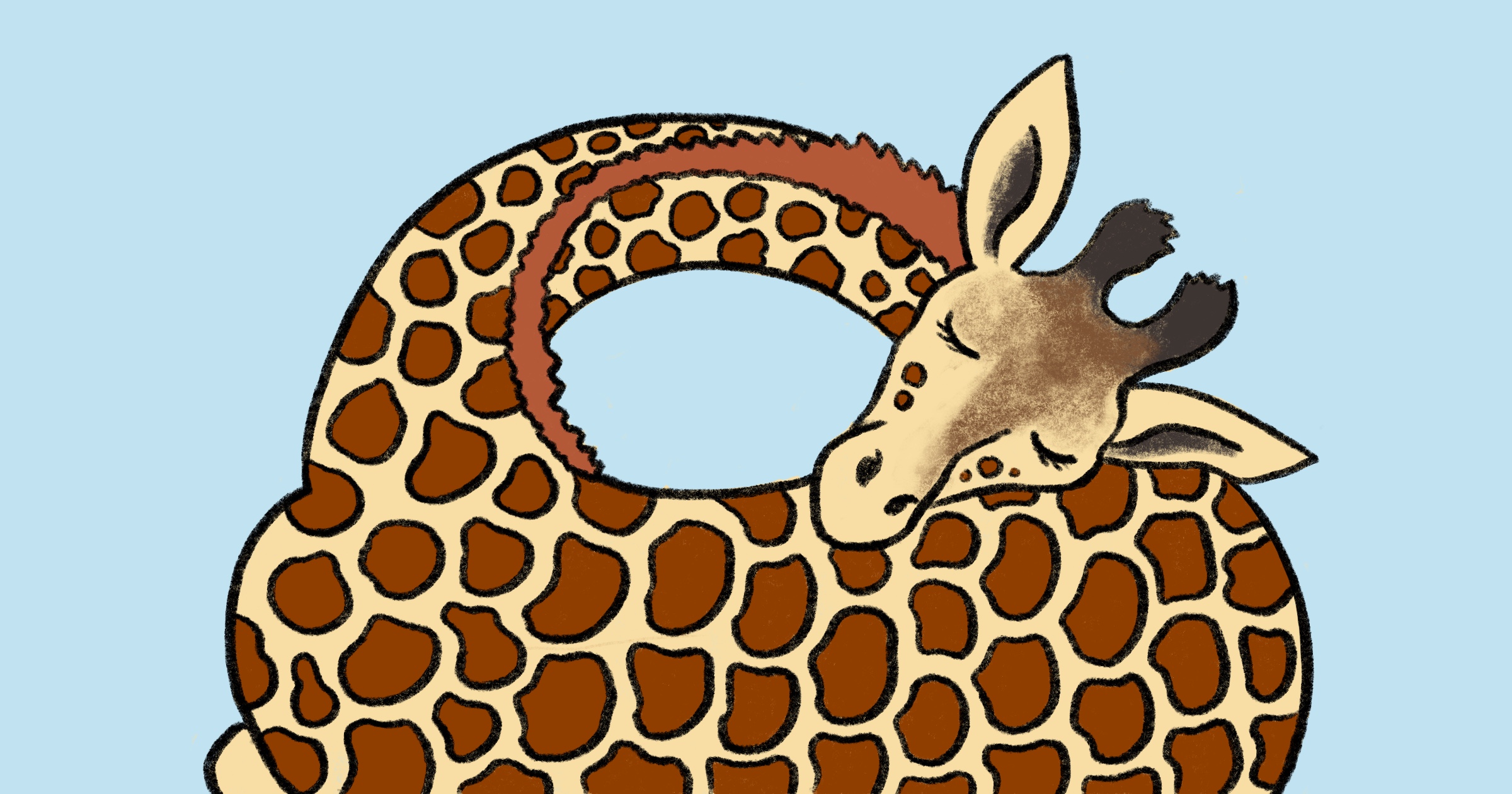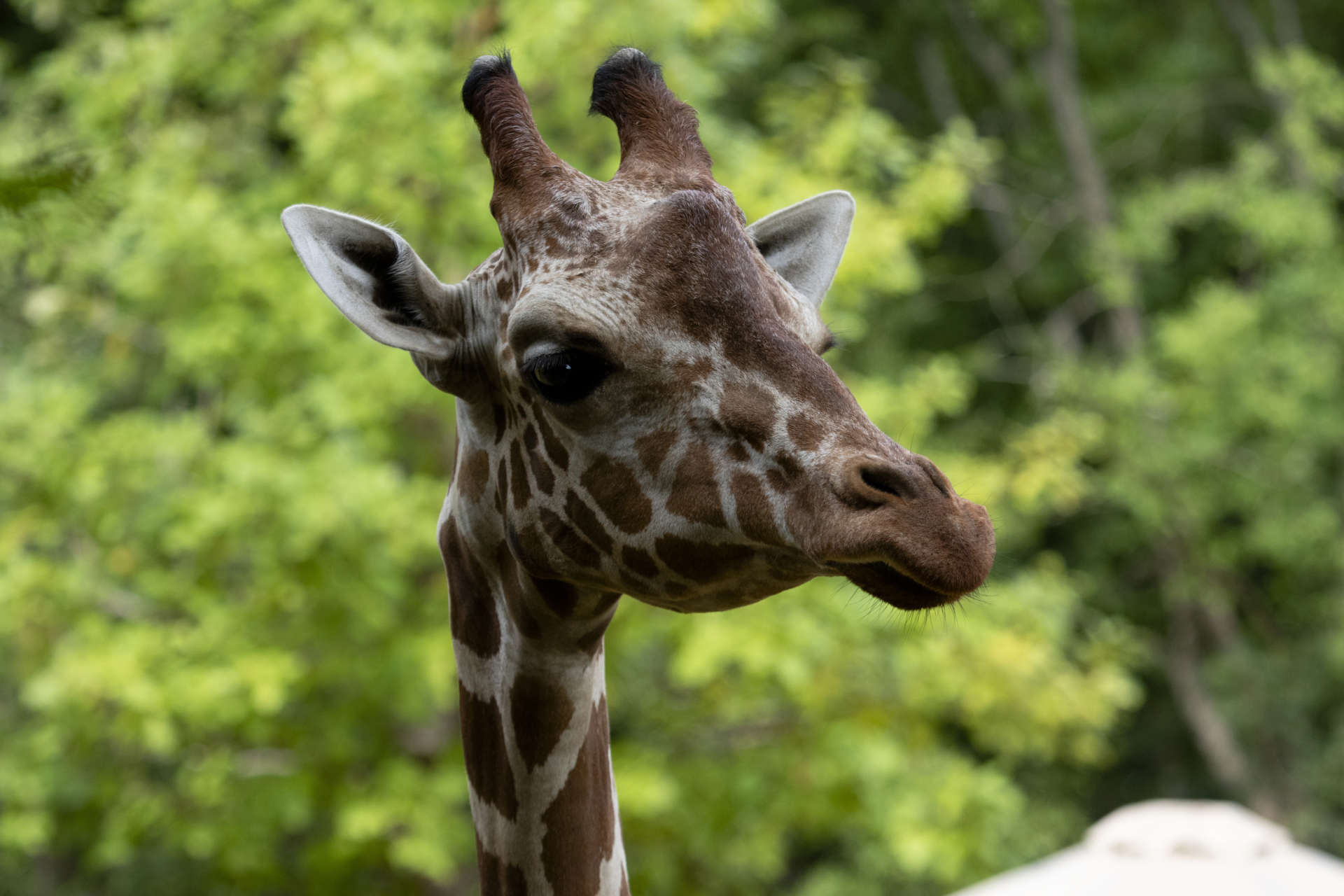Have you ever wondered about giraffes and their sleeping habits? Well, let me tell you, these towering creatures have some pretty fascinating ways of catching some Z's. You might be surprised to learn that giraffes can indeed sleep standing up. Yeah, you read that right! But there's so much more to their sleep routines than just standing around. So, let's dive into the world of giraffe sleep and uncover some mind-blowing facts.
When we think of giraffes, we often picture them munching on leaves high up in the trees or gracefully strutting across the savanna. But what happens when it's time for them to rest? Do they lie down like other animals, or do they keep their feet on the ground? The answer might surprise you. Giraffes have evolved some pretty unique sleep behaviors that help them survive in the wild.
Understanding how giraffes sleep is not just interesting—it's also crucial for conservation efforts. By learning more about their habits, we can better protect these magnificent animals and ensure they thrive in their natural habitats. So, let's explore the ins and outs of giraffe sleep and find out why they're one of the most intriguing animals on the planet.
- Masa49com A Comprehensive Guide To The Rising Star In Online Entertainment
- Robert Luke Yunaska Wikipedia The Untold Story You Wonrsquot Find Elsewhere
Table of Contents
- Biography of Giraffes
- Do Giraffes Really Sleep Standing Up?
- Evolution of Sleep Patterns
- How Long Do Giraffes Sleep?
- Do Giraffes Ever Lie Down?
- Benefits of Standing Sleep
- Impact of Environment on Sleep
- Threats to Giraffe Sleep
- Conservation Efforts
- Frequently Asked Questions
Biography of Giraffes
Giraffes are truly remarkable animals, and their unique characteristics make them stand out in the animal kingdom. Let's take a closer look at what makes these gentle giants so special.
Giraffe Facts and Figures
Here's a quick snapshot of some key giraffe facts:
- Scientific Name: Giraffa camelopardalis
- Average Height: 14-19 feet
- Weight: 1,600-3,000 pounds
- Diet: Herbivorous (mostly leaves and twigs)
- Habitat: African savannas, grasslands, and open woodlands
But there's more to giraffes than just their impressive height. They're also known for their long necks, spotted coats, and gentle nature. And, of course, their unique sleep habits make them even more fascinating.
- Iribitari Gal Live Action The Ultimate Guide To This Phenomenon Thats Got Everyone Talking
- Jenna Yeh The Rising Star Shaping The Entertainment Industry
Do Giraffes Really Sleep Standing Up?
Now, let's get to the heart of the matter—do giraffes really sleep standing up? The answer is a resounding yes! Giraffes have adapted to sleep while standing to avoid predators and stay alert in their surroundings.
When a giraffe sleeps standing up, it enters a state called "standing sleep." During this time, the animal remains upright, with its legs locked in place and its head resting on its back. This position allows the giraffe to quickly react to any potential threats and escape danger.
Standing sleep is just one of the many ways giraffes have evolved to survive in the wild. Their ability to sleep while standing is a testament to their adaptability and resilience.
Evolution of Sleep Patterns
So, how did giraffes develop their unique sleep patterns? Over millions of years, giraffes have evolved to prioritize safety over comfort when it comes to sleep. In the wild, lying down makes them more vulnerable to predators, so standing sleep became a necessary adaptation.
Studies have shown that giraffes have a highly specialized nervous system that allows them to enter a state of deep sleep while still maintaining balance. This remarkable ability is a result of millions of years of evolution, ensuring their survival in a harsh and competitive environment.
But it's not just about standing sleep. Giraffes have also developed other sleep strategies, such as taking short naps throughout the day, to maximize their rest while staying safe.
How Long Do Giraffes Sleep?
Believe it or not, giraffes don't need a lot of sleep. In fact, they only sleep for about 30 minutes to 2 hours a day. And when they do sleep, it's usually in short bursts of 5-10 minutes at a time.
This limited sleep schedule is another adaptation to their environment. In the wild, giraffes need to stay alert and aware of their surroundings to avoid predators. By sleeping in short intervals, they can rest without putting themselves in too much danger.
Interestingly, giraffes in captivity tend to sleep a bit more than their wild counterparts. This could be due to the lack of predators and the relative safety of their environment.
Do Giraffes Ever Lie Down?
While giraffes primarily sleep standing up, they do occasionally lie down. When they do, it's usually in a folded position, with their legs tucked underneath them and their heads resting on their backs.
Lying down is a more vulnerable position for giraffes, so they only do it when they feel safe and secure. In the wild, this might happen during the night when predators are less active, or in areas with dense vegetation that provides some cover.
Interestingly, young giraffes tend to lie down more often than adults. This could be because they haven't fully developed their standing sleep abilities yet, or because they need more rest to support their rapid growth.
Benefits of Standing Sleep
Standing sleep offers several benefits for giraffes, both in terms of safety and efficiency. Here are some of the key advantages:
- Quick Reaction Time: By staying upright, giraffes can quickly react to any potential threats and escape danger.
- Energy Conservation: Standing sleep allows giraffes to rest without expending too much energy, which is crucial for their survival in the wild.
- Improved Awareness: Even while sleeping, giraffes can remain aware of their surroundings, giving them a better chance of spotting predators.
These benefits make standing sleep an essential part of a giraffe's daily routine, helping them survive in a challenging environment.
Impact of Environment on Sleep
The environment plays a significant role in how giraffes sleep. Factors such as habitat, climate, and predator presence can all influence their sleep patterns and behaviors.
In areas with high predator activity, giraffes are more likely to rely on standing sleep to stay safe. On the other hand, in safer environments, they may feel more comfortable lying down to rest.
Climate also affects giraffe sleep. In hotter regions, giraffes may sleep more during the cooler parts of the day to avoid overheating. Conversely, in cooler areas, they might sleep less to conserve body heat.
Threats to Giraffe Sleep
Despite their impressive adaptations, giraffes still face several threats to their sleep and overall well-being. Habitat loss, poaching, and climate change are just a few of the challenges they encounter in the wild.
Habitat loss, in particular, can disrupt giraffe sleep patterns by forcing them into smaller, more crowded areas. This increases competition for resources and makes it harder for them to find safe places to rest.
Poaching is another major threat, as it not only reduces giraffe populations but also creates a more dangerous environment for those that remain. This can lead to increased stress and decreased sleep quality for the animals.
Conservation Efforts
Conservation efforts are crucial for protecting giraffes and ensuring they can continue to thrive in the wild. Organizations around the world are working to address the threats facing giraffes, from habitat preservation to anti-poaching initiatives.
One of the key strategies in giraffe conservation is creating protected areas where they can live safely without fear of predators or human interference. These areas provide giraffes with the space and resources they need to rest, eat, and reproduce.
Education and awareness campaigns are also important for promoting giraffe conservation. By informing the public about the challenges giraffes face and the importance of protecting them, we can encourage more people to get involved in conservation efforts.
Frequently Asked Questions
Here are some common questions about giraffe sleep:
Q: Why do giraffes sleep standing up?
A: Giraffes sleep standing up to avoid predators and stay alert in their surroundings. This position allows them to quickly react to any potential threats and escape danger.
Q: How long do giraffes sleep each day?
A: Giraffes only sleep for about 30 minutes to 2 hours a day, usually in short bursts of 5-10 minutes at a time.
Q: Do giraffes ever lie down to sleep?
A: Yes, giraffes do occasionally lie down to sleep, but only when they feel safe and secure. This usually happens during the night or in areas with dense vegetation that provides some cover.
Q: What threats do giraffes face in the wild?
A: Giraffes face several threats in the wild, including habitat loss, poaching, and climate change. These challenges can disrupt their sleep patterns and overall well-being.
Conclusion
So, there you have it—the fascinating world of giraffe sleep. From their ability to sleep standing up to their unique sleep patterns and behaviors, giraffes are truly remarkable animals. By understanding more about how they rest and why it's important, we can better appreciate these gentle giants and work to protect them for future generations.
Now it's your turn! Share your thoughts and questions in the comments below. And don't forget to check out our other articles for more fascinating facts about the animal kingdom. Together, we can make a difference in the lives of these incredible creatures. Cheers!
- Lacy Kim Leaked Onlyfans The Untold Story You Need To Know
- Discover The Allure Of Sexy Malayalam A Deep Dive Into Culture Language And Trends


